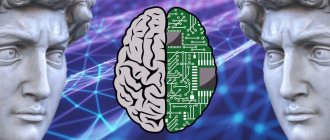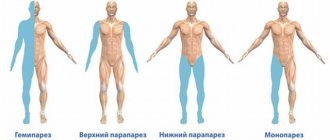Hallucinations in schizophrenia are changes in the perception of the external or internal world, in which a person hears, sees or feels something that cannot exist in the objective environment. Fear of schizophrenia and hallucinations is natural for any person. How to treat correctly to prevent them and take control of the disease?
Call! We can help even in cases where previous treatment was not effective!
Hallucinations in schizophrenia differ from illusions in that the patient sees an object that does not exist. When, with illusions, a real object always exists, but in a modified form. Mirages are deceptions of the senses based on the laws of physics. For example, when we observe distortions in the distorting mirrors of the funhouse. Illusions and hallucinations are signs of damage to the human mental sphere, and mirages are just deceptions of perception that all people fall for. This is often used by illusionists.
Classification of hallucinations in schizophrenia
Hallucinations in schizophrenia are classified according to sensory organs.
This is how they distinguish between auditory, visual, olfactory, gustatory, tactile, visceral (sensations from internal organs) and muscular. Complex hallucinations may occur that involve two or more areas.
There are also true hallucinations and pseudohallucinations. True ones always occur outside and are related to a real-life situation.
Hallucinatory syndrome always indicates an acute lesion of the human psyche. The most common disturbances of perception occur in cases of poisoning, severe somatic conditions and organic disorders of the brain, that is, symptomatic psychoses.
general characteristics
There are true and false hallucinations.
True hallucinatory images have the qualities of objectivity, integrity, structure, and constancy. They are assimilated to the real situation, that is, they interact with existing objects, for example, an ax lies on the table. Pseudohallucinations are present in a conditional, imaginary space and often do not have a clear structure. Common options are voices in the patient’s head or visual images hovering in the air. The origin of pseudohallucinations is interpreted by the patient as artificially caused by another person. According to the content, hallucinations can be elementary, simple, or complex. Elementary ones have incomplete objectivity, are unimodal, are represented by individual non-speech sounds and simple images like causeless flashes. Simple hallucinatory phenomena are objective, static, sometimes move, but do not change shape. They are unimodal - they use one analyzer. Complex hallucinations are formed with the participation of several analyzers; the images are dynamic and often have semantic content. Example: the smell of poisons combined with voices behind the wall, deciding to poison the patient.
Hallucinations are varied - single and multiple images, randomly arising or connected by a common plot, neutral in relation to the patient or frightening, commanding, commenting, amusing. According to the key analyzer involved, they are divided into visual, olfactory, auditory, tactile, gustatory, visceral, motor, complex. Regardless of the cause and modality, the general characteristic is that the images are always perceived by the patient as really existing.
Pseudohallucinations
The concept was first described in 1844 and called mental hallucinations. They are also called apperceptive.
They resemble fantasy images, lack spatiality, and appear as if outside the zone of perception. The patient understands that they are unrealistic and therefore is not too willing to talk about them.
This phenomenon is characterized by 3 main features:
- inward orientation - such hallucinations are born in the patient’s subjective world. They are perceived not by standard analyzers, but, for example, by the inner eye;
- high significance. Patients with schizophrenia experience pseudohallucinations much more vividly and realistically than true ones. They are quite intrusive, and it is difficult for a person to dull them; they constantly pursue him no matter what he does;
- artificial creation. Since such hallucinations persist for quite a long time and are beyond the patient’s control, he believes that these images were inspired by someone’s external influence. They are introduced into his brain using special video and radio devices or arise through the influence of magnetic fields and magical forces.
There are several types of pseudohallucinations, the most common of which are visual and auditory.
If these are visual visions, then the person gets the impression that he sees them not with his eyes, but with his mind. They are born with clear consciousness and are easily distinguished from real hallucinations, devoid of objective sizes and shapes.
Here is an example of visual pseudohallucinations described by a man with schizophrenia. He saw a revolver in his head, ready to fire at any moment. The pistol circled in his head, changing its location. The man was in a state of panic. He believed that his enemies could pull the trigger of the gun in his brain using a remote control and then his head would simply be blown off. His pursuers create such visions specifically to enslave him and force him to obey them.
A feature of auditory pseudohallucinations is the unusual localization of the voice. It can come from the stomach or any other part of the body, and can be heard “from another planet.” The voices are more like echoes, echoes, or “the sound of thoughts.” They can talk among themselves or be imperative in nature, that is, give orders. The voice can be single. Pulling or driving thoughts are also typical.
Auditory pseudohallucinations are characterized by the Kannabikh-Liozner symptom, when the patient hears calls from strangers in a diminutive form.
The following types are much less common:
- motor – imposing any movements;
- olfactory, gustatory – unpleasant, “artificially created” smells and tastes;
- speech motor – words come out without the patient’s consent. The tongue and lips work without his control.
Mixed pseudohallucinations are often encountered in people with schizophrenia. For example, one patient claimed that secret agents were watching him and transmitting information to him through an electric current. They shape his thoughts, present him with obscene images.
Apperceptive hallucinations are similar to memories, only the latter arise during the conscious work of the psyche, and pseudo-visions appear independently of human will and do not obey it. It seems that these memories are imposed on the person. Sometimes it is very difficult for the patient to understand and accept them.
Some argue that pseudohallucinations are similar to visions in the astral plane. Logic and the brain frantically try to find an explanation for them. A person begins to perceive his surroundings in a completely different way and an unprecedented meaning is revealed to him. Sometimes logic can explain this. The worst thing is when she can’t cope with it, starting to rush around chaotically in search of answers.
Despite the fact that pseudohallucinations do not correspond to images of reality, for patients they are completely real, they simply come from another dimension. Conversely, true hallucinations sometimes appear in an unusual form: a devil or a green man. But the patient is sure that they exist in this reality, in this reality.
Compare:
| Categories | True hallucinations | Pseudohallucinations |
| Compliance with existing reality | Compliant | Does not match |
| Appearance time | More often in the morning | Any time of the day |
| Characteristic | They have clear features and location in space. Are part of the environment | They don’t have specifics, they don’t have mass or volume. Atypical features, location. |
| Dependence on external influences | They appear in reality. Sometimes they are mistaken for really existing images | The feeling of being placed in the brain under someone's control. |
| Behavior | There may be inappropriate behavior | The patient often does not exhibit “strange” behavior. But his state is depressed, he is irritated, hyperexcitable. |
Causes of hallucinations
Hallucinations can completely change behavior, emotions, feelings and thoughts. The brighter the images, the more they control a person, “obscuring” reality. Their content and frequency vary depending on the etiological factor. The causes of hallucinations can be divided into four large groups: states of physiological or psychological stress, mental illness, neurological pathologies and substance poisoning.
Extreme conditions
Hallucinatory sensations appear in extreme situations for the body, which are often accompanied by the risk of death and are associated with a pronounced deficiency or excess of chemicals, information, and physical influences. Such phenomena cause a state of acute mental or physiological stress, and hallucinations are formed based on changes in biochemical processes in the brain. Their possible reasons:
- Overheat.
Unreal images, sounds, voices occur when body temperature rises to 41-42° C. This condition is observed with fever, severe heat stroke. Characterized by psychomotor agitation, delirium, and confusion. - Hypothermia.
Extremely low temperatures can also provoke a delusional-hallucinatory state. Symptoms develop already at a mild stage of hypothermia, when the body temperature drops below 35 ° C. A person feels chills, the functions of internal organs are inhibited, coordination of movements is impaired, and perception is distorted. - Lack of food.
Lack of nutrients creates a shortage of energy, which is necessary for the functioning of the brain and other organs. Hallucinosis appears on days 7-9 of fasting, when ketone bodies become the main energy source. The person looks detached, indifferent, and shows no interest in close people or current events. - Lack of air.
Oxygen is essential for normal brain function. When the supply of air stops, brain tissue uses oxygen reserves for 4-5 minutes, after which hypoxic changes gradually increase, and hallucinatory images are formed. The reasons for the lack of oxygen are intentional suffocation, being in an unventilated room, and ischemic brain damage. - Extreme fatigue.
Prolonged physical and mental overload can cause hallucinatory experiences. Distortion of perception occurs as a result of exhaustion of the nervous system, or more precisely, a violation of its selective function, the ability to distinguish the real from the imaginary. - Sleep deprivation.
Lack of sleep can be the result of insomnia, serious illness, forced wakefulness due to overload at work. Sometimes a state of sleep deprivation is created purposefully to achieve altered consciousness. Regardless of the cause, a person experiences vivid hallucinations, heightened perception of the senses, and a feeling of the unreality of what is happening. - Sensory deficiency.
The nervous system functions normally under constant exposure to a variety of stimuli. If the volume of incoming sensory information decreases significantly or its arrival stops altogether, the brain compensates for this by creating its own stimuli - images of various modalities. Astronauts experience similar conditions. For therapeutic purposes, sensory deprivation chambers are used to stimulate the creativity and deep emotions of patients. - Social isolation.
A decrease or lack of opportunity to interact with other people provokes a loss of personal identity. A person ceases to understand who he is and what he is like, and feels the loss of himself as a representative of society. Hallucination becomes a defense mechanism that helps maintain mental balance and self-identity. Often it is represented by the voice of a “friend”, the image of one of the relatives. The causes of social deprivation are confinement in solitary confinement and serious illness.
Mental disorders
In psychiatric practice, hallucinations often manifest themselves as part of the hallucinatory-delusional syndrome. They are characteristic of psychoses - disorders accompanied by emotional and behavioral inadequacy, lack of a critical attitude towards oneself. As a rule, patients develop pseudohallucinations - visual, auditory, olfactory, gustatory, kinesthetic images that are formed without reference to real space, often accompanied by a feeling of imposition, suggestion by someone else. Causes of hallucinatory-delusional phenomena:
- Schizophrenia.
In schizophrenia, the development of hallucinations is classified as a first-rank symptom. Patients hear the sound of their own thoughts, contradictory, mutually exclusive and commentary voices. Somatic pseudoperceptions (movement, deformation of organs) are noted. Patients are confident that their ideas, feelings and impulses are being influenced, that their thoughts can be read and recognized by others. - Bipolar disorder.
Symptoms of psychosis are observed in severe bipolar affective disorder. A common psychotic manifestation is auditory and visual hallucinations. More often they unfold in a manic phase along with delusional ideas of greatness and omnipotence. The hallucination can be congruent or incongruent with the patient’s mood, supports manic tendencies or is not associated with them. - Symptomatic psychoses.
The causes of exogenous psychotic states are severe somatic diseases, infections, poisoning. They occur with temporary confusion of consciousness, from twilight to oneiroid. Acute psychosis usually lasts from several hours to 2-3 days, delirium with hallucinations often develops at night, and the emerging images frighten patients. In severe cases, delirium turns into amentia, in which confusion, incoherent speech, and chaotic movements predominate. - Organic delusional disorder.
In schizophrenia-like disorder, hallucinatory-delusional attacks are possible, accompanied by unmotivated actions, loss of control over behavior, and manifestations of aggression. Hallucinations are often visual, have religious, magical content, and call for action. The causes of organic delusional disorder are epilepsy, focal brain damage, and surfactant poisoning. - Organic hallucinosis.
A distinctive feature of organic hallucinosis is continuous hallucination caused by the influence of an organic factor. The images are stable and appear with clear consciousness, during periods of wakefulness. The most common is alcoholic hallucinosis, in which patients hear pointing or threatening voices.
Neurological diseases
Another reason for hallucinatory images is organic damage to the parts of the brain responsible for processing perceived information. Pathological irritation of the cortical parts of the analyzer occurs, patients begin to see flashes, simple luminous objects, hear music, smell, taste in the mouth in the absence of real stimuli. Another neurological cause of hallucinations is the loss of the analyzer or its functions. Common factors in the development of hallucinatory symptoms in neurological pathologies include:
- Neurodegenerative processes.
Degeneration of nervous tissue leads to the development of dementia, a chronic progressive disease characterized by impairment of higher cortical functions, including memory, speech, and intelligence. Hallucinations are not a necessary symptom. Most often they are diagnosed in dementia with Lewy bodies, less often in Alzheimer's disease and Huntington's chorea. - Local brain lesions.
Hallucinatory visions and sensations are provoked by focal damage to the temporal, occipital or parietal lobes of the brain, hyperstimulation of the midbrain or brainstem. The immediate causes are tumors, strokes, vascular malformations, traumatic brain injuries, focal variants of epilepsy. True elementary and simple hallucinations are typical: flashes, noises, tactile sensations. - Neuroinfections.
In neuroinfections, the pathogen penetrates the tissue of nerve cells, causing both general somatic symptoms and damage to the central nervous system. Convulsions, disturbances of consciousness, a state of overexcitation, delusional-hallucinatory syndrome can occur during the acute course of purulent encephalitis and meningitis. - Loss of analyzer function.
When the analyzer loses the ability to receive external information, a state of forced sensory deprivation is formed. The hallucinatory sensation develops according to compensatory mechanisms, recreating images of a certain modality. A well-known example is Charles Bonnet syndrome - the vision of images in patients with acquired severe visual impairment. - Narcolepsy.
Patients with narcolepsy for no reason experience intermittent drowsiness and attacks of decreased muscle tone while maintaining consciousness. When falling asleep, hypnagogic hallucinations unfold, which prevent you from falling asleep completely, and when you wake up, hypnopompic hallucinations unfold, preventing you from correctly assessing the situation around you.
Substance use
Hallucinations can be provoked by taking drugs, alcohol, or certain medications. Following the use of a psychoactive substance, acute intoxication develops, accompanied by a disorder of consciousness, cognitive functions, perception, and emotions. The severity of psychotic symptoms depends on the type and dose of the psychoactive substance. A mental disorder is characterized by vivid hallucinatory images, false recognitions, and delusions of relation. Such conditions are provoked by the use of a number of substances:
- Hallucinogens.
When using psychotomimetics, such as LSD, mescaline, ecstasy, mental and behavioral abnormalities develop. In the acute period of intoxication, uncontrollable laughter, crying, euphoria, depersonalization, and derealization are observed. The hallucinatory experience is usually vivid, dynamic, and multimodal. The tendency to hallucinosis may persist, manifesting itself in the future when taking alcohol or sleeping pills. - Cannabinoids.
Crushed flowers and leaves of hemp, and preparations made from them lead to drug intoxication. Hallucinogenic, stimulating and sedative effects are noted. Hallucinatory visions are the result of acute intoxication, the simultaneous use of high doses of a substance. Speech becomes slurred, complex motor functions are impaired, and coordination deteriorates. - Amphetamines.
These synthetic substances cause mental arousal, a feeling of well-being, and emotional closeness to other people. The administration of large doses provokes the development of panic attacks, hallucinosis, and paranoia. Hot temper, impulsiveness, and aggressiveness worsen without any reason. Long-term drug use increases the risk of amphetamine psychosis, which is symptomatically similar to schizophrenia. - Substance abuse.
The group of toxic substances includes paint solvents, adhesives, and varnishes. Intoxication is accompanied by a loss of the ability to critically assess what is happening. Hallucinatory sounds and visions, confusion, and vomiting may occur. When substances are removed from the body, the headache intensifies and weakness appears.
Examination and treatment of patients is carried out under the guidance of a psychiatrist
Therapeutic measures
Therapeutic measures depend on the diagnosis given to the patient. Possible reasons include:
- mental disorders (personality disorder, schizophrenia, bipolar disorder, post-traumatic syndrome, psychotic depression);
- physiology (central nervous system injuries, Parkinson's disease, epilepsy, brain tumor);
- some infectious pathologies (infections of the lungs, bladder, brain, and other internal organs);
- use of chemical substances in large doses (nicotine, ethyl alcohol, illegal drugs).
Once the root cause is determined, the doctor draws up a course of therapy. Most often, antipsychotic drugs or antipsychotics are used to combat non-existent images. They block a number of dopamine receptors in specific areas of the brain, which helps reduce hallucinations. But antipsychotics do not always cope with the task. About 30% of patients continue to hear, see or experience images.
There are many non-pharmacological intervention options. Their effectiveness remains in question, but doctors still cannot find a quality alternative. One type of non-pharmacological intervention is cognitive behavioral therapy. It includes regular visits to a psychotherapist, who changes the patient’s attitude towards the problem. The therapist tries to eradicate the unpleasant/painful experience and get the patient to come to terms with the voices or visions in their own head. It should be understood that a complete cure through CBT is impossible; only a reduction in symptoms can be achieved.
Don't try to get rid of hallucinations on your own. Be sure to consult a doctor, go to group classes with people with a similar diagnosis, regularly visit a psychotherapist and remember that only you can control your own body and mind.
Diagnostics
The subjective nature of experiences with perceptual disorders complicates the diagnostic process. Pathopsychological assessment of patients' condition is based on the clinical experience of a psychiatrist. The assumption of the presence of hallucinations is possible by observing the patient’s behavior and analyzing the general picture of the disease (anamnestic, follow-up information). The standard diagnostic process includes three procedures:
- Clinical survey.
The peculiarity of hallucinations is that they are perceived by patients as part of reality; a critical attitude is possible only in rare cases. Therefore, direct questions about the symptom are ineffective. Hallucinatory-delusional syndrome is identified in the process of communicating with patients, when they begin to talk about implausible or implausible events - “exposure to waves”, “mind reading”, “suggestion with a glance”. The doctor receives more objective clinical information from family members. - Observation.
The behavior and emotional state of the patient reflect the content and nature of hallucinations. He can peer into the space in front of him, at an empty wall, while experiencing fear, surprise, joy. With auditory hallucinations, patients often listen to voices and sounds; they can engage in dialogue, swear, laugh, or joke. Tactile sensations make them scratch, rub their skin, ask a doctor to examine them, and remove “insects.” - Provocative tests.
There are a number of tests to identify hidden perceptual disorders and predisposition to them. When performing the Aschaffenburg test, the patient is asked to talk on a switched off phone; if a conversation is started or the patient hears something, the presence of hallucinations of the auditory modality is assumed. To detect visual hallucinations, the Reichardt test (looking at a blank sheet of paper) and the Lipman test with pressure on the eyelids are used.
Why do people think that hallucinogens are not dangerous?
Numerous studies have shown that hallucinogens do not cause noticeable physical dependence, which gives reason to rejoice at the “harmlessness” of the drugs. It's actually much worse than people think.
Unfortunately, most of the materials related to the study of the issue are based in part on one’s own experience in using substances, as well as speculation and references of relative reliability. But this happens because it is impossible to study the issue only from the standpoint of official science and medicine, since hallucinogens are not a banal drug, but initially have a different essence, which is described below.
Not all hallucinogenic substances can be fully classified as narcotic substances, simply because they do not meet the criteria according to which the substance can be called a drug. But most of the known substances are still included in the lists of prohibited drugs, since the final picture of intoxication with psychoactive substances gives doctors the right to unambiguously draw conclusions about the harmful effects of hallucinogenic plants and their derivatives.
Treatment
To eliminate hallucinations caused by taking psychoactive drugs, it is often enough to stop using drugs. If vital substances and conditions are deprived, return them to their previous level: normalize body temperature, restore proper nutrition, sleep and rest, resume social contacts. Hallucinatory symptoms in mental and neurological diseases are relieved with the help of antipsychotics. They reduce mental and motor arousal and prevent the formation of productive psychotic symptoms.
Who previously used psychedelics and why?
There are many historically proven examples of the use of plants for purely ritual purposes. So, for example, Soma, the drug god in Ancient India, is surrounded by so many legends and traditions that it is difficult to believe that the drug was used for a banal destructive purpose. Just the opposite. Soma was deified so much that not only the drink was a mediator, he himself was the embodiment of God for people.
Peyote, which is identified among Indians of various tribes with the sacred animal deer to this day, was previously collected only by Tatewari, the first sorcerer, according to Indian mythology.
The famous ayahuasca, which literally translates as “soul curl.” The name was given to the plant because during the ritual people actually get rid of mental leprosy, visualize pictures of the creation of the Universe, primordial animals and human beings, and learn some higher truths.
In modern civilization there is hardly a nation or tribe where plants with obvious psychedelic or hallucinogenic effects have not been used in one way or another.
Today, plants are not always used by healers or shamans. But there are limitations, which again speaks of a certain rituality of use, that is, the purpose of the plants, and not simple “pampering” in order to get a dose of pleasure.
Thus, among the Siberian Koryaks, Amanita mushrooms are eaten by men and women, but in Mexico, women can eat special mushrooms in order to perform magical actions. There are also medical purposes for plants, especially since there are actually studies that prove that psychedelics can cure various diseases. By the way, the same goes for marijuana, and it is indeed used for treatment in many countries of the world quite officially.
Some tribes, for example, the Jivaro Indians, give Brugmansia plants to boys who, thanks to immersion in another layer of reality, can communicate with deceased ancestors and learn from them knowledge and experience.
Residents of the Polynesian archipelago in the Pacific Ocean use the kava-kava plant, although it is more of a plant that puts you in a hypnotic state, but Piper methysticum does not directly cause hallucinations.
Of course, there are probably still a huge number of plants in the world, unstudied or partially studied, which can immerse a person in a state of connection with another reality.
The problem lies elsewhere. Trying to penetrate this wonderful world with the help of the same plants and lost rituals, people make one big mistake: the plants that were on the planet long before the existence of contemporaries and the plants that live on the planet today are different.
Why do people get drunk as hell and what really happens?
Drug addicts and smokers of hallucinogenic plants can actually see those entities that “destroy” them. Mediums describe astral beings as crawling reptiles, insects, snakes, in general, rather unpleasant-looking creatures. And the expression “catch a squirrel” or “get drunk as hell” is not allegorical. This is a very real state in which drinkers can see their field parasites. Another thing is that at these stages it is almost impossible to free yourself from them, even if the realization comes to your mind that it is time: too strong an attachment does not allow you to so easily detach yourself from the parasite.
How does a hallucinogen affect the emotional field?
And now we will describe human behavior from the standpoint of assessing various subtle bodies. Emotions make up the human emotional body. How does drug use affect him?
First of all, the emotion of hunger and craving for the substance arises, the dependence is concentrated in the center of the will (projection to the solar plexus). There is millions of evidence that the human psyche suffers from drugs and behavior changes. This is already the field of medicine. There are anamnesis, diagnoses, studies, and scientific articles. And everyone knows in practice that after any drug a person’s behavior changes.
It is the emotional body that suffers the greatest damage. People who are addicted to weed remain emotionally immature for the rest of their lives because the growth and maturation of the emotional body is slowed down. In practice, it looks very simple: a person remains infantile, egocentric and does not understand simple things until the end of his life. Roughly speaking, wisdom does not increase with experience.
We can see this everywhere: immature, hot-tempered men aged 35-40, touchy, irresponsible fathers of families who do not care about raising their children. The same applies to women. They say about those who never developed any intelligence at their age, and this is true.
Instead of cultivating highly spiritual qualities in themselves: love, wisdom, compassion, creativity, drug users lie, dodge, lose their individuality, cheat on loved ones, steal, live in fear, anxiety, melancholy, heavy and low energies, and do not understand why life so unfair and difficult.
Why don't people understand and believe that hallucinogens ruin their lives?
As already mentioned, drug users constantly lower their vibrations, the frequency of radiation at the cellular level. We have all heard more than once about miraculous cases of healing, when a loving mother saved a sick child from death with her prayers. This happens because the frequency of love energy is an order of magnitude higher than low vibrations. So, the body of a drug addict constantly emits lower-level vibrations.
Addicts are programmed with fear, anxiety, and fear of the future by their essences, which force them to turn to drugs again and again.
There is one more point: not understanding the mechanisms of plants that have hallucinogenic effects, people establish prohibitions, which creates increased fear of consuming plants, which, if used wisely, do not cause harm.
The influence of foreign thoughts creates their own information field, which intensifies the already existing fears of drug addicts. Thus, psychedelics, due to their prohibition and the numerous thoughts and images generated around them, become even more desirable, but the sick, unhealthy mind of a drug addict wants to use them for the sole purpose of overcoming the ban and proving to himself and everyone that it is safe.
But this is the whole problem: by proving to someone that he is wrong, a person gets involved in the struggle and feeds the situation with his behavior. If there was no need to prove, there would not be such a significant amount of information, then there would be no need to overcome unnecessary prohibitions and there would be a clear understanding of what is what. After all, people don’t drink sulfuric acid solutions knowing that it will kill them. But make the same fuss about it, and acid would become just as dangerous for humanity.
Therefore, under conditions of information pressure, getting involved in the fight against the system is too expensive. It makes more sense simply not to use hallucinogens in principle for the purposes of “insight” and “striving for God.”
Of course, the authorities are doing everything to solve the problem, and from their point of view they are acting reasonably: if they cannot overcome the situation, then at least they ban drugs. But you should understand that this is not enough. And this does not solve the problem of drug addiction. We need information that can exceed the importance of the informational hum of drug addiction. That's when things will start to change. People need to know more to evaluate and make decisions.
The effect of hallucinogens on the etheric body
What we call the soul, a certain indefinable and intangible concept, partly constitutes the etheric body of man. The drug exposes the veils of the soul, opening access to program codes that can simply turn a person into a fan, hysterical, plunge him into depression or other equally joyful states. Psychiatry is still making discoveries in the field of research of the human psyche; narcology, as a branch of psychiatry, also studies deviations in the behavior of people who have become drug addicts. All these problems are a consequence of the destruction of the etheric body. Sometimes the human soul requires more than one life to restore its natural shells. By the way, it is precisely for the reason that drug addiction destroys the protective covering that it is so difficult to treat drug addicts using witchcraft methods, prayers, and stonecrop. They simply have almost no etheric body that can be healed.
To summarize the above, a drug addict who is addicted to any “harmless” drug is a potential corpse. He begins to “decay” during life at all levels of his existence. What kind of spiritual development can we talk about if a person is constantly degrading?











